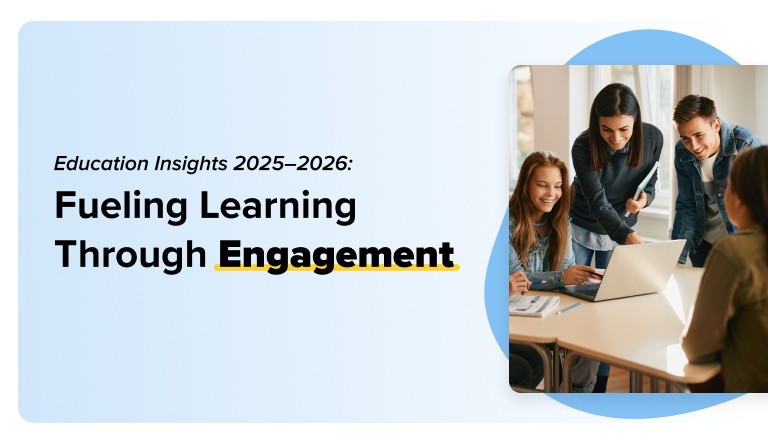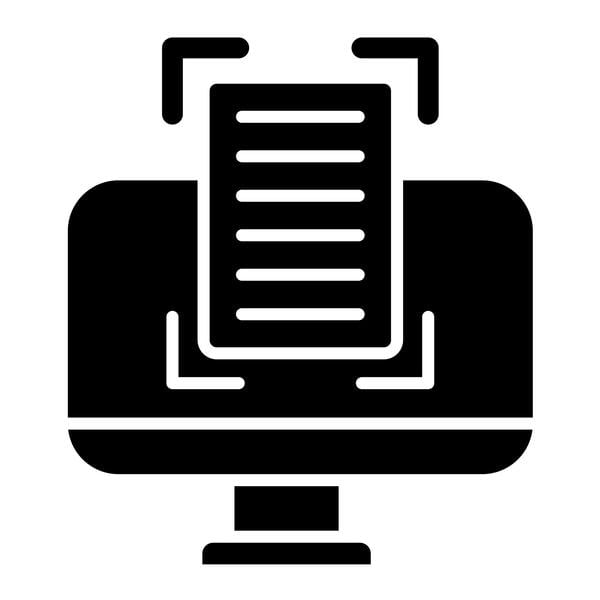Imagine studying in a Wales where every student understands their rights and responsibilities.
Where module feedback drives real change, where student representatives have time, resources and power to make a difference, and where complaints drive learning, not defensiveness.
Where every student contributes to their community in some way – and where decisions can’t be made about students without students.
When the Tertiary Education and Research (Wales) Act 2022 was being drafted, the inclusion of a mandatory Learner Engagement Code was important – Wales resolved to put into primary legislation what England had buried in the B Conditions and Scotland had largely left to institutional discretion.
Section 125 now requires the Commission to prepare and publish a code about learner involvement in decision-making that’s not optional, or best practice – it’s law.
This year the newly formed commission (MEDR) has been informally consulting on it – but it’s now been so long since the original debates that there’s a danger everyone helping to develop the thing will forget what it was supposed to do.
Nobody will benefit from something that emerges as something weak or vague. The opportunity is for Wales to lead the way with some crunchy “comply or explain” provisions for universities in Wales that reflect the fact that this has been put in primary legislation.
The cost of getting it wrong
We know what happens when learner engagement is treated as an afterthought. In England, providers often silence critique on reputational grounds – the Office for Students’ (OfS) free speech guidance had to explicitly state that students have the right to publicly criticise their institutions. Imagine needing regulatory clarification that criticism is allowed in a democracy.
Meanwhile, Scottish institutions celebrate their “partnership” approach while student representatives struggle to influence decisions that matter. Sparqs frameworks look good on paper, but without regulatory teeth, they rely on institutional goodwill. And goodwill, as any student rep will tell you, tends to evaporate when difficult decisions need making.
When module evaluation becomes a tick-box exercise rather than genuine dialogue, problems fester. When student reps are excluded from decisions about their own education, drop-out rates climb. When complaints are buried rather than learned from, the same issues affect cohort after cohort.
I’ve seen a lot of it over the years. The disabled student who gave up trying to get adjustments implemented because every lecturer claimed the central service’s plans were “merely advisory”. The international PGT student who couldn’t complain about teaching quality because they feared visa implications. The part-time student who couldn’t access support services because everything was designed around full-time, on-campus students.
The student facing disciplinary proceedings who wasn’t allowed an advocate and faced a panel with no student members – in contrast to the support available to staff in similar situations.
These aren’t edge cases – they’re systematic failures that a robust Code could prevent. Wales has a genuine opportunity to do something different – to create a Code with teeth that makes learner engagement mandatory, measurable and meaningful.
Learning from what works
The most effective student engagement systems require common features. They’re comprehensive, covering everything from module evaluation to strategic planning, and are backed by resources, ensuring student representatives aren’t expected to volunteer countless hours without support. And crucially, they have consequences when institutions fail to comply.
The key is moving from “should” to “must”, with a comply or explain mechanism that has genuine bite.
Here’s how it could work. The Code would set out clear standards – not aspirations but requirements. Providers would either have to comply with the standards or publicly explain why they’ve chosen an alternative approach that delivers equivalent or better outcomes.
But – and this is crucial – explanations wouldn’t be allowed to be boilerplate excuses. They would need to be evidence-based, time-limited, and subject to scrutiny.
The Commission would assess compliance annually, not through tick-box returns but through triangulated evidence – student surveys, complaint patterns, representation effectiveness metrics, and crucially, the views of student representatives themselves.
Where providers persistently fail to meet standards without adequate justification, consequences would follow – from improvement notices to conditions on funding.
There would be an expectation of an annually agreed student partnership agreement – setting out both processes and priority actions – and an expectation that students’ unions would produce an annual report on the experiences of students at that provider.
This isn’t about micromanaging institutions – it’s about establishing minimum standards while allowing flexibility in how they’re met. A small FE provider might implement representation differently than a large university, but both must demonstrate their approach delivers genuine student voice in decision-making.
Student rights and democratic education
The Code should first establish that students are both consumers with enforceable rights and partners in their education. This dual recognition ends the sterile debate about whether students are one or the other. It means providers must respect consumer rights (quality, promises kept, redress) while creating genuine partnership structures.
Knowing your rights matters. Following Poland’s model, all students should receive comprehensive training on their rights and responsibilities within 14 days of starting. That shouldn’t be an optional freshers’ week session – it should be mandatory education covering consumer rights, representation opportunities, complaints procedures, support services, and collective responsibilities.
Crucially, the training should be developed and delivered by the SU. There should be written materials in (both) plain language(s), recorded sessions for those who can’t attend, annual refreshers, and staff trained to respect and uphold these rights. When every graduate understands both their rights and responsibilities, Wales will transform not just higher education but society.
Protected status and academic adjustments
Following Portugal’s model, student representatives should get protected status. That means academic adjustments for representative duties, just as providers must accommodate pregnancy or disability. No student should face the choice between failing their degree or fulfilling their democratic mandate.
Representatives should get justified absences for all activities – not just formal meetings but preparation, consultation, and training. Assessments should be rescheduled without penalty, deadlines adjusted based on representative workload, and attendance requirements modified. Reps should get protection from any form of academic discrimination.
The Finnish model adds another layer – ideally, student representatives in governance should receive academic credit or remuneration (or both). Learning through representation is learning – about negotiation, governance, and strategic thinking. They are skills that matter in any career.
Module evaluation as universal engagement
The Estonian approach shows what’s possible when feedback becomes embedded in academic culture. Making evaluation mandatory for module completion ensures universal participation. But it must be meaningful – published results, documented actions, closed feedback loops. Every student becomes a partner in quality enhancement, not just the engaged few.
Wales should adopt Estonia’s three-part structure – teaching quality, student engagement, and learning outcomes. This recognises that educational success requires both good teaching and student effort. No more blaming students for poor outcomes while ignoring teaching failures, and no more student satisfaction surveys that ignore whether students are actually engaging with their learning.
Results should be published within modules – not buried in committee papers but visible where students choose modules. Previous evaluation results, actions taken, ongoing improvements – all should be required to be transparent. Future students should be able to see what they’re signing up for, and current students should see their feedback matters.
Comprehensive scope of engagement
Sweden’s clarity is instructive – students must be represented “when decisions or preparations are made that have bearing on their courses or programmes or the situation of students.” There’s no weasel words about “where appropriate” or “when practicable” – if it affects students, students must be involved.
In the Netherlands, where decisions are made by individuals, not committees, information must be provided and consultation must occur at least 14 days in advance. And written explanations should be required when student recommendations aren’t followed – because accountability matters in managerial decisions.
Beyond academic structures, students should be represented on professional service boards, IT committees, estates planning groups, marketing focus groups. Decisions about campus facilities or digital systems affect students as much as curriculum design – yet these areas often lack any student voice.
The digital environment deserves special attention. Student representatives should be involved in decisions about learning platforms, assessment systems and communication tools – not after implementation but during planning. Because digital accessibility and usability directly impact educational success.
Consent not consultation
Wales could be bold. Following the Dutch model, some decisions should require student consent, not just consultation. The Code could distinguish clearly between:
Matters requiring consent (cannot proceed without student agreement):
- Teaching and Assessment Regulations
- Significant programme structure changes
- Student charter content
- Institutional policy frameworks affecting learners
- Quality assurance procedures
- Representation structure and changes
- Elective module options for the following year
Matters requiring consultation (mandatory input but not binding):
- Budget allocations affecting student services
- Campus development plans
- Strategic planning
- Staff appointments affecting students
- Marketing and recruitment strategies
Matters governed by a council of staff and students:
- Student accommodation
- Student employment
- Student services and mental health
- Harassment and sexual misconduct policy
Matters delegated to the students’ union
- Student engagement and representation
- Student activities and volunteering
This isn’t radical – it’s a recognition that students are genuine partners. No other stakeholder group would accept purely advisory input on regulations governing their activities. Why should students?
From course reps to citizens
Another area where Wales could be genuinely radical would take Wales’ vision of students as citizens by going beyond traditional representation structures – broadening “engagement” beyond academic quality.
The European model of subject-level associations – common from Helsinki to Heidelberg – shows what’s possible. These aren’t just academic societies but genuine communities combining social activities, career development, representation, and civic engagement. They create belonging at the discipline level where students actually identify.
In Tallinn, departmental student bodies aren’t sideshows but partners in departmental culture. They organise orientation, run mentoring, coordinate with employers, feed into curriculum development – and crucially, they’re funded and recognised as essential, not optional extras.
In some countries there’s even a “duty of contribution” where students volunteer to help run the institution. Green officers, peer mentors, student ambassadors – multiple routes to engagement beyond traditional representation. Not everyone wants to be a course rep. But everyone can contribute something.
Even if we’re just talking about student clubs and societies, Wales should mandate that providers support and fund these diverse engagement routes.
Every student should serve somehow during their studies – it’s citizenship education in practice. Some will be traditional representatives, others will mentor new students, run sustainability initiatives, organise cultural events, support community engagement. All develop democratic skills. All should share responsibility for their community.
Taking part
Some countries maintain a tripartite principle for major bodies – equal representation of students, academic staff, and professional staff – to recognise that universities are communities, not hierarchies. Maybe that’s asking too much – but even with a minimum of two students in the room, representation means nothing without support.
Some countries require that student reps receive all documentation at least five days in advance, training on context and background, briefings on complex issues, and support to participate fully – you can’t contribute if you don’t understand what’s being discussed.
When new committees or working groups are established, there should be active consideration of student membership with default presumption of inclusion. Decisions and justifications should be communicated to student representatives, and there should be annual reviews of representation effectiveness with evidence-based changes.
Some countries transform meetings from tokenistic to meaningful. Materials distributed five working days in advance means no ambushing student representatives with complex papers. Everything in accessible language, translated where needed, should be a standard too.
The Swedish innovation of publishing all decisions and rationales builds accountability. Rather than being buried in minutes, decisions get actively communicated. Students can see what’s decided in their name and why – democracy requires transparency. And committees should pick up minimum student membership levels with voting rights, and there should never (ever) be just one student in a room.
Funded independence
Latvia mandates that SUs receive at least 0.5 per cent of institutional income, and minimums were agreed as part of the Australian Universities Accord. This isn’t generous – it’s the minimum needed for effective representation. The Welsh Code should set a minimum as a % of income, or fees – ensuring student bodies have resources to train representatives, gather evidence, and hold institutions accountable.
Funding should come with independence safeguards. There should be no conditions that compromise advocacy, no reductions for challenging decisions, and protected status even when (especially when) relationships become difficult. Written agreements should protect core funding even during institutional financial difficulties.
Beyond core funding, providers should be required to supply facilities, administrative support, IT access, and time for representatives. The split between guaranteed core funding for democratic functions and negotiated funding for service delivery would protect both representation and student services.
Complaints as learning and conduct
Complaints are a really important part of student engagement – and so the OIA’s Good Practice Framework, which learns from them, should be mandatory, not optional. A proper system treats complaints as valuable intelligence, not irritations to be managed.
Wales should then go further, automatically converting failed appeals containing service complaints into formal complaints. When patterns emerge, compensation should go to all affected students, not just those who complained. And every provider should be required to publish on what it’s learned from complaints over the past year, and what it’s doing about it – with sign off from the SU.
The Swedish model’s restrictions on disciplinary proceedings protect students from institutional overreach. Proceedings are only allowed for academic misconduct, disruption of teaching, disruption of operations and harassment. And students are given full procedural rights – including representation, disclosure and presence during evidence.
Wales should go further. Every student facing disciplinary proceedings should have the right to independent support, and any panel should include student members who are properly trained and supported. Peer judgement matters in community standards.
And neither disciplinary nor funding processes should ever be used to silence criticism, punish protest, retaliate for complaints or discourage collective action. The free speech protections in OfS’ guidance should be baseline – students’ right to criticise their institution is absolute, whether individually or collectively.
Disability rights are student rights
Every year, countless disabled students arrive with hope and ambition, only to find themselves trapped in a Kafkaesque system of “support” that demands disclosure, documentation, negotiation, repetition, and often – silence. If Wales is to lead, then it should be unflinching in acknowledging the daily indignities that disabled students face – and bold in tackling the systemic failures that allow them to persist.
Adjustments, when granted, are inconsistently implemented, and advocacy, if it exists at all, is fractured and under-resourced. In many departments, reasonable adjustments are still treated as optional extras. Central services write the plans, but academic departments dispute their legitimacy, claiming subject expertise trumps legal obligation. Students are asked to justify, to prove, to persuade – again and again. And often in public – as if their access needs were a debate.
Disabled students can’t be expected to fight these battles alone. Wales should require institutions to facilitate advocacy, embedded close to academic departments, co-located with SUs where possible, and independent enough to challenge unlawful behaviour when necessary. Not every rep can be an expert in disability law. But every student should have access to someone who is.
The law is clear – providers have an anticipatory duty. That means planning ahead for the barriers Disabled students face, not waiting until they fall. But few providers conduct serious, evidence-based assessments of their disabled student population by type of impairment, by subject area, by mode of study. Without that, how can anyone claim to be meeting the duty? Wales could also set the tone nationally with a mandatory bank of questions in the NSS that probes access, implementation, and inclusion.
Wales’ code should mandate that providers move beyond warm words to hard strategy – analysing disability data with student input, mapping gaps, and resourcing change. Every provider should be required to publish a Disability Access Strategy – co-designed with students, informed by evidence, and backed with budget. And implementation should be monitored – not through passive complaints, but active auditing. Where there are failures, there should be automatic remedies – and if patterns persist, the Commission must intervene.
And briefing all students on disabled students’ rights would help too. If every student understood what disabled students are legally entitled to, fewer adjustments would be denied, more peers would offer solidarity, and institutions would face pressure from all sides to comply with the law. Education here is empowerment – for disabled and non-disabled students alike.
Wales could lead
If all of that feels like a lot, that’s because it is.
But that’s why it was put in primary legislation – to show what’s possible when you take student engagement seriously, to create structures that outlast changes in institutional leadership or political climate, and to graduate citizens who understand democracy because they’ve practiced it.
But most importantly, to lead:
The Commission will ensure that Welsh PCET providers lead the UK in learner and student engagement and representation.
Universities Wales isn’t so sure. In its response to the Regulatory System Consultation it said:
We do have a number of concerns about regulatory over-reach that can be found in several of the pillars. For example, in the Learner Engagement pillar, the demand for investment of resources and support for learner engagement could be deemed to be a breach of institutional autonomy, particularly in light of this being married to ‘continuous improvement’ – if this ends up being a metric on which the sector is judged, it could be particularly contentious in tight financial circumstances.
Good grief. It really isn’t a breach of institutional autonomy for students to expect that a little slice of their fees (whether paid by them or not) will be allocated to their active engagement and will be under their control. As Welsh Government put it during the passage of the Bill:
There is already some excellent learner engagement within the sector, but the prize now is to ensure this is the norm across all types of provisions and for all learners.
Welsh Government talks about civic mission, distinctive Welsh values, and education for citizenship – in universities, the Code is where rhetoric can meet reality.
Fine words should become firm requirements, and partnership can stop being what institutions do to students and become what students and institutions do together.
I know which Wales I’d rather study in. The question now is whether MEDR has the courage to mandate it.










